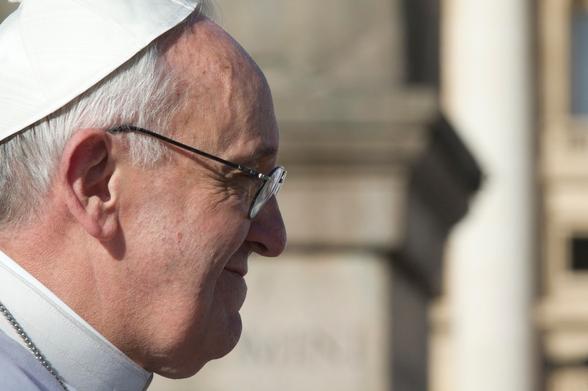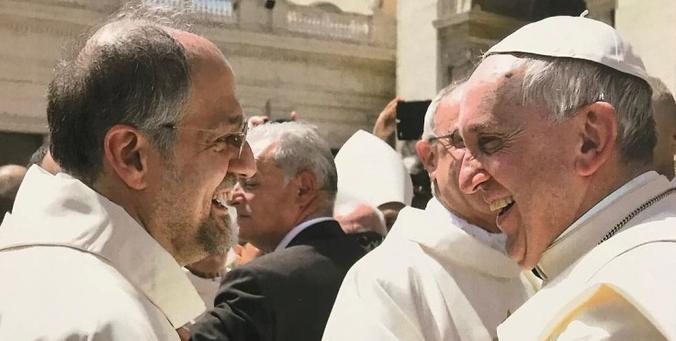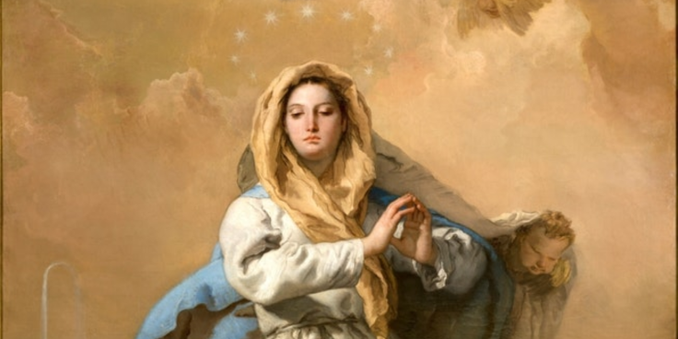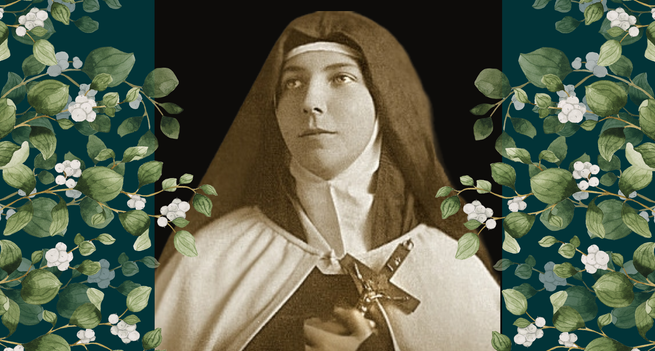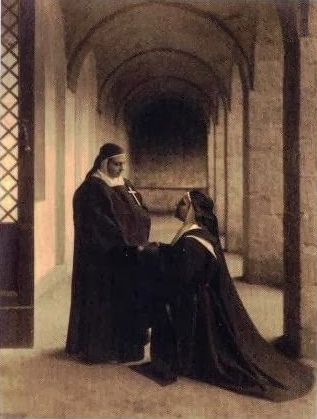Saverio Cannistrà, OCD: Carmelite Shepherd for Pisa
On February 6, 2025, Pope Francis appointed Saverio of the Sacred Heart Cannistrà, O.C.D., as the new Archbishop of Pisa. A Discalced Carmelite friar, theologian, and former Superior General of the Order, Archbishop-elect Cannistrà has served the Church with wisdom, humility, and a profound sense of the Carmelite charism.
In 2019, during the Extraordinary Definitory of the Discalced Carmelite Friars in Goa, India, he delivered a homily at the site of the first Discalced Carmelite foundation in the country, established in 1619. This gathering marked the fourth centenary of the Teresian Carmelites’ presence in India, a milestone that invited reflection on the Order’s missionary spirit.
The homily that follows was translated by the blogger for that occasion. Archbishop-elect Cannistrà reflected on the courage and spiritual depth that animated the first Discalced Carmelites in India. His words from Goa take on renewed significance today as he prepares for his new pastoral mission in Pisa.
For a deeper look at his Carmelite roots and new pastoral mission, listen to our latest podcast episode below.
https://youtu.be/q6yDfu6rhhc?si=L3sD8gqk8bAUhK3k
His full homily from the 2019 gathering follows.
A Carmelite Reflection on Mission
(Homily of Father Saverio Cannistrà, O.C.D., Goa, February 8, 2019 – Translation by the blogger)
Votive Mass of Blesseds Denis and Redemptus
Readings: Eph 6:10–20; Mt 5:1–12
It is with special emotion that I preside at this Eucharistic celebration together with all of you, my dear brothers in Carmel. We are in the place where the first Discalced Carmelite convent stood in Goa and in India. The first three Carmelites arrived in Goa on Christmas Day, 1619: they were Father Leandro of the Annunciation and two professed students, Brother Elías and Brother José Alejo.
The convent was officially inaugurated on March 19, 1621, with the vestition of seven novices, among whom was a young Portuguese soldier who took the name Brother Redemptus of the Cross [Blessed Redemptus].
On July 16 of the following year, the church was solemnly dedicated to Our Lady of Mount Carmel. The community remained here for about 90 years, until 1709, when all non-Portuguese missionaries were forced to leave. The convent was then handed over to the Oratorians of St. Philip Neri.
It was in this convent, on Christmas Day in 1636, that Father Dionysius of the Nativity [Blessed Denis] made his solemn profession in the hands of Father Filippo of the Holy Trinity, a missionary, theologian, writer, and, at the end of his life, Superior General of the Congregation of Italy. While Father Dionysius was studying theology in preparation for his priestly ordination, Brother Redemptus of the Cross, who had returned to Goa from the Tatta mission (in present-day Pakistan), was serving as porter and sacristan in the same monastery.
As we know, in 1638, these two friars—Blesseds Denis and Redemptus—were sent to Sumatra as part of a diplomatic mission to the Sultan of Aceh, where they were ultimately martyred for the faith.
These simple historical notes give us an idea of the richness of the history that we commemorate today: a history of holiness, of Carmelite life, of missionary zeal, and above all, of love for God and neighbor. Many thoughts and feelings arise as we remember this.
The first is a sense of awe at the dynamism shown by the Teresian Carmel in its early years. Who would have imagined that just fifty years after its humble beginnings in Duruelo, the Discalced Carmelites would already be in Goa—the capital of the Portuguese Indies, a metropolis of about 200,000 inhabitants—having passed through Poland, Persia, the island of Ormuz, and the empire of the Great Mogul?
Scholars can analyze the historical reasons behind this extraordinary expansion of a small group of contemplative religious. But for us, this history calls us to reflect on what the true strength of our religious vocation is:
It is not the force of numbers, nor of tradition, nor of structures, which can become a burden and an obstacle. It is the power of the Spirit, the abundance of his gifts, which transforms our weakness and our fears into the courage and joy of the disciples and apostles of Jesus Christ.
As we heard in the first reading, it is the armor of God that allows us to face the trials and challenges of history. Truth, justice, peace, faith, and listening to the Word of God are the weapons that make up this armor.
A second thought concerns the relationship between contemplation and action. Nothing is more misleading than opposing these two dimensions. The more one is truly contemplative, the more one is truly active—or rather, we become instruments of God’s action, servants of His will.
The first generations of Discalced Carmelites—especially Father John of Jesus-Mary—understood perfectly the core message of St. Teresa of Avila:
Contemplation is allowing oneself to be invaded and transformed by God, who is Love. And Love is always the same: love for God and love for humanity. These two cannot be separated.
It was the fire of this love that made our confreres of four centuries ago so dynamic and effective. They loved God and gave themselves to Him without reserve. But precisely for this reason, they loved the Church and made themselves radically available to it, with obedience, without personal agendas.
They loved humanity, appreciated and valued the cultures, languages, and places where they lived. Their contemplation naturally opened them to mission, which was a movement of true encounter. These Carmelites understood that going on a mission meant getting close to others, listening, studying, and discovering the richness of different peoples.
Thus, their study of theology was not separate from their study of languages, religions, geography, and even botany.
Love is like the sun: it warms, it allows all of humanity to grow and bear fruit in those who allow themselves to be illuminated by it.
Dear brothers, let us thank the Lord for these 400 years of Carmelite presence in India. Let us do so with joyful hearts and with humble awareness of our smallness in the face of such greatness.
At the same time, let us do so with the conviction that this history is not over—it continues in us. We are the brothers of Father Leandro, Father Filippo, Father Dionysius, and Brother Redemptus.
From them, we can learn what it means to live our Carmelite vocation today—as children of St. Teresa and St. John of the Cross.
Let us ask for their intercession, so that the flame that the Spirit ignited in their hearts may not be extinguished in us and in our communities.
Four hundred years ago, the first Discalced Carmelites set foot in India, carrying the spirit of St. Teresa of Avila beyond Europe. Today, one of their sons is called to shepherd the Church in Pisa. The same trust in divine providence that sustained those early missionaries now accompanies Archbishop-elect Saverio Cannistrà as he prepares for his new mission.
Let us entrust him to the intercession of Our Lady of Mount Carmel and the protection of the Sacred Heart of Jesus. May the Holy Spirit, who guided the first Carmelites to distant lands, guide him now as he takes up his pastoral office in Pisa.
Want to stay updated on Carmelite wisdom and reflections? Listen to the Carmelite Quotes podcast, subscribe to our blog, and share this post with others!
Translation from the Italian text is the blogger’s own work product and may not be reproduced without permission.
Featured image: Discalced Carmelite Superior General Saverio of the Sacred Heart Cannistrà, O.C.D. greets Pope Francis in St. Peter’s Square at the Mass for the canonization of St. Mary of Jesus Crucified Baouardy. Image credit: Discalced Carmelites
#archbishop #BlessedsDenisAndRedemptus #DenisOfTheNativity #DiscalcedCarmelite #friars #homily #India #nomination #Podcast #PopeFrancis #RedemptusOfTheCross

